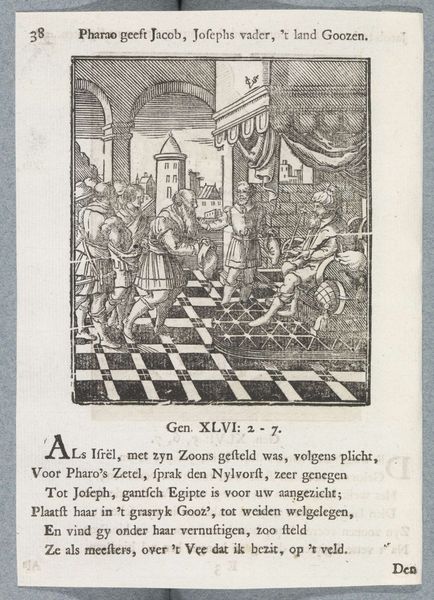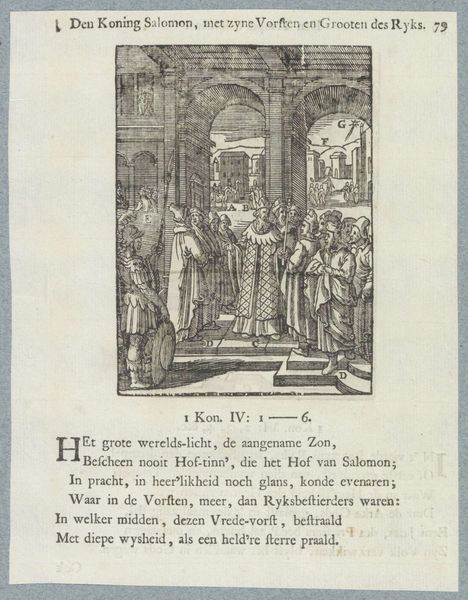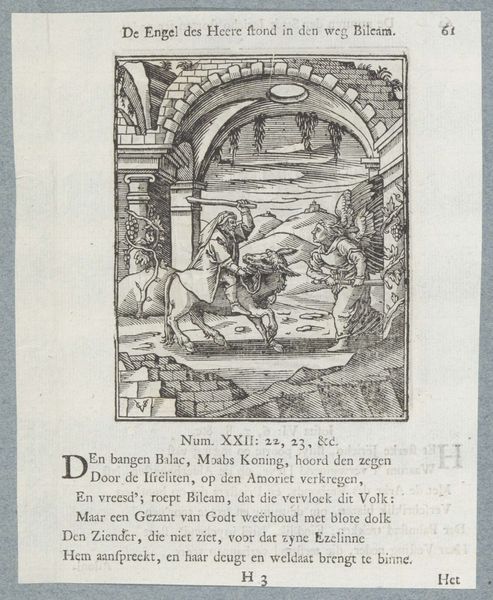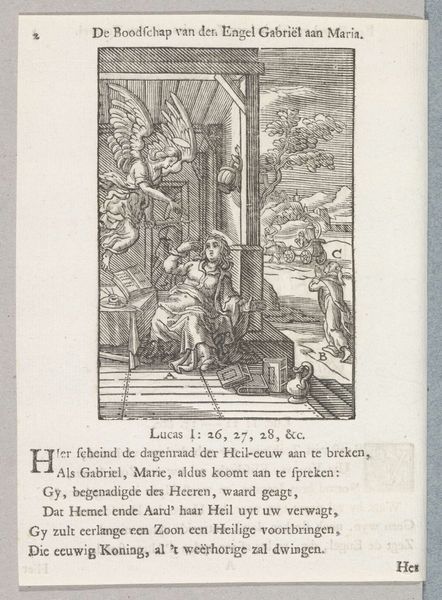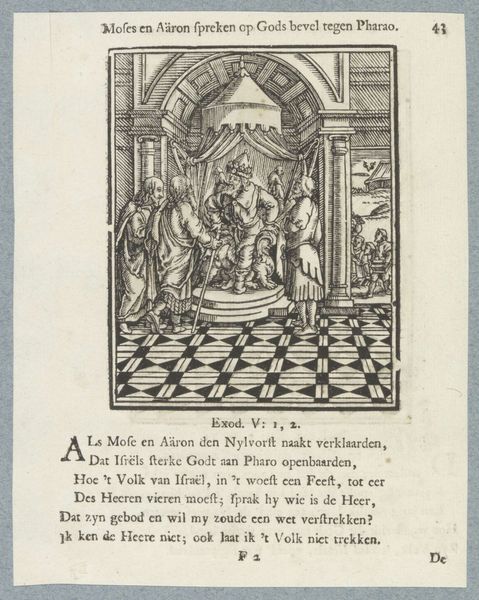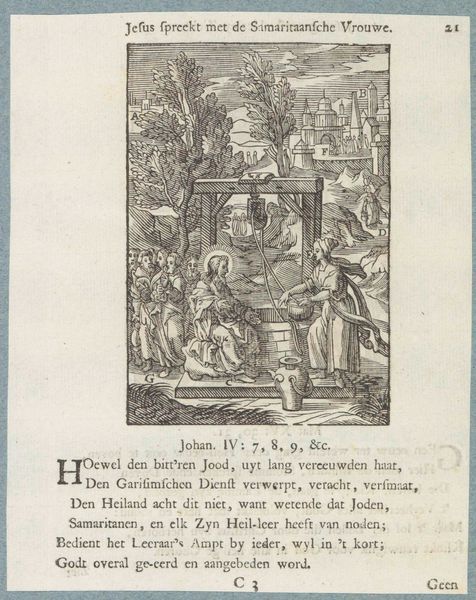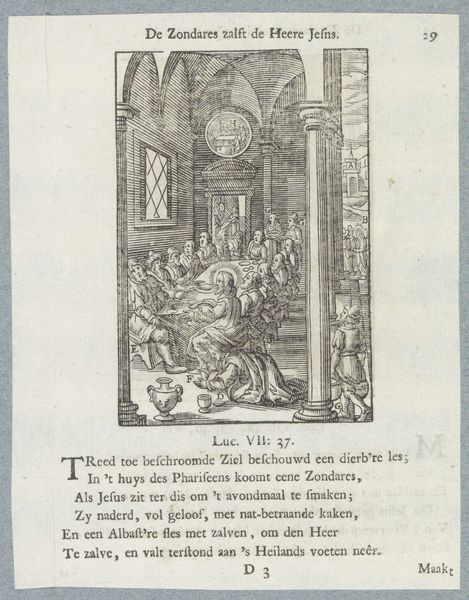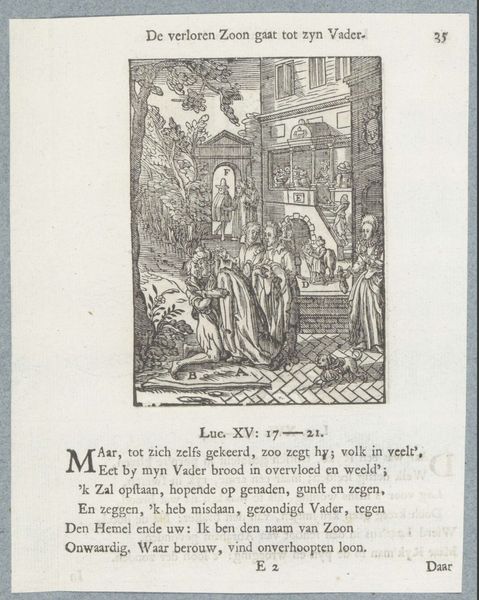
print, engraving
#
narrative-art
#
baroque
# print
#
figuration
#
engraving
Dimensions: height 104 mm, width 74 mm, height 171 mm, width 134 mm
Copyright: Rijks Museum: Open Domain
Curator: This print, titled "Jakob zegent Efraïm en Manasse," made between 1645 and 1740 by Christoffel van Sichem II, depicts a scene of familial blessing. It's fascinating, isn’t it, how a simple engraving can carry so much narrative weight? Editor: It really is. The way the artist uses light and shadow creates this intimate, almost theatrical space. What do you see as the most significant aspect of this piece? Curator: I see a reflection of patriarchal structures and the negotiation of power within families. Jacob's blessing, his deliberate placement of hands, it's not just a religious act; it’s a declaration of lineage and inheritance within a system deeply embedded in social hierarchies. Notice how the artist centers Jacob and makes Joseph almost secondary? How do you see that impacting the story's dynamics? Editor: That's a great point! It seems to be about the continuity of power through generations, almost like a political transfer of authority rather than a simple blessing. It almost feels as though Joseph is endorsing this deliberate changing of the order. Curator: Exactly. Now, consider the broader social implications. How might the viewers of this print in the 17th or 18th century interpret this scene within their own family structures and societal expectations regarding male primogeniture and power? Editor: Thinking about it that way definitely opens up new avenues. It's not just a biblical scene but also a commentary on the societal norms of the time. I hadn't considered how loaded the image could be. Curator: It’s always essential to dig deeper than the surface narrative. The symbolism in these works can provide invaluable insight into how power, identity, and societal roles were constructed and reinforced through art. Editor: This makes me look at early modern prints completely differently. I have to wonder what these small images contributed to those cultural constructs and why they mattered so much. Thank you!
Comments
No comments
Be the first to comment and join the conversation on the ultimate creative platform.

